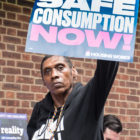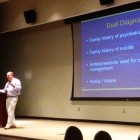
In recent years, more young adults are choosing the lower prices and sweeter flavors of cigars and the longer, slimmer cigarillos over cigarettes. Troubled by this trend, health experts are releasing a seven-year study in the October issue of the American Journal of Public Health that addresses which specific young adult populations are using them and which brands are their favorites. According to a press release, 19- to 26-year-olds who are black, non-Hispanics, who engage in risky behaviors and smoke cigarettes, marijuana or blunts would be most likely to smoke one of these brands—Black & Mild, Swisher Sweets, Phillies, White Owl or Garcia y Vega—which all primarily produce cigarillos or little cigar products. This is the first study about young adult cigar smoking that uses national data and was conducted by the nation’s largest organization devoted to preventing and stopping tobacco use. “While much effort has been focused over the past decade to increasing awareness about cigarettes and the dangers of smoking, cigar products have emerged as a profitable product for tobacco companies that, unlike cigarettes, are currently unregulated by the FDA and are taxed at a much lower rate,” Dr. Cheryl G. Healton president of the organization, said in the release.





